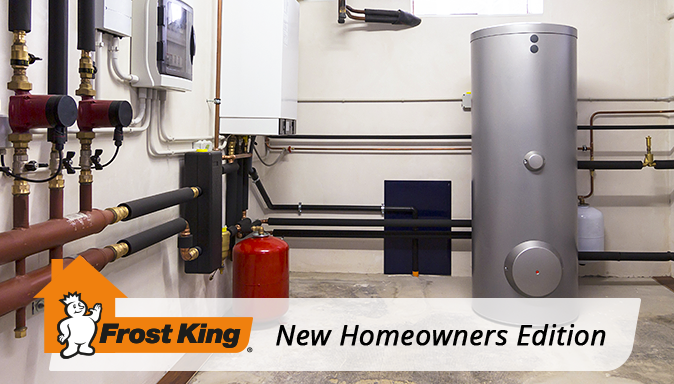You probably take your home’s hot water supply for granted… until the day your hot shower is freezing cold and your hot water tank is surrounded by a puddle of water. Replacing the tank can cost thousands of dollars, so it pays to spend some time doing basic preventative maintenance to extend the life of your hot water heater.
With this little bit of annual maintenance, your hot water heater should last for a decade or more. Read on for the simple things to do once a year to keep your hot water heater running efficiently.
1. Test the TPR Valve. The temperature pressure release valve—usually located on the side or top of the water heater—plays a big job in keeping your hot water tank operating safely. It automatically opens if the pressure in the tank gets too high and releases excess pressure through a discharge line so the tank doesn’t explode. To test it, shut off the power and the cold water supply line, then look for a valve with a lever that can be lifted up or down (it should be on the top or side of your water heater and has a pipe that runs straight down the side to the bottom of the tank). Place a bucket below the pipe and lift the lever to let some water out. If no water is released when you lift the lever or if water keeps flowing after you let go of the valve, it’s time to replace the valve.
2. Replace the Anode Rod. Rust and corrosion are the enemies of your water heater tank. That’s why water heaters are designed with an anode rod, a metal tube made from magnesium, aluminum, or an aluminum/zinc alloy that runs through the center of the tank. The sole purpose of the anode rode is to attract minerals, sediment, and other corrosive elements that would otherwise corrode the interior of your tank—but that means that over time, the rod itself begins to corrode and must be replaced or the interior of the tank will start to degrade. Most anode rods are installed on the top of the unit and held in place with a hex nut. To replace it, let a few gallons of water out of the tank (the power and the cold water supply line should still be turned off), then loosen the nut and pull the rod right out. How often you need to replace the rod depends on your water quality; in most cases, the anode rod should be replaced every year or two but if you use a water softener, the rod may need to be changed every six months.
3. Drain Sediment From the Tank. After you’ve changed the anode rod, you need to drain any sediment that has settled at the bottom of the tank. Not only does sediment build-up shorten the life of your water heater, it makes your water heater less efficient and drives up your energy bill. To get rid of the gunk, attach a hose to the drain valve, slowly open the drain valve, and pull up on the TPR valve. Let the water flow until it is clear and free of sediment. (You can let the water flow into a bucket or run the hose directly into a floor drain.) The water will be extremely hot, so be very careful as the water drains. Once the water runs clear, close the drain valve and the TPR valve. Before turning the water and power back on, turn on hot water faucets in the kitchen and bathroom to release any built up air in the pipes. Then remove the hose and turn the power and the cold water supply line back on.
4. Insulate Hot Water Heater Pipes. If the hot water pipes that lead out of your tank are not insulated, slide Frost King Tubular Foam Pipe Insulation over the exposed pipes to keep heated water warm—and save on your water heating costs. Watch this video for easy installation instructions:
5. Add a Water Heater Insulation Blanket. If you have an older water heater, adding a Frost King water heater insulation blanket can reduce standby heat losses by 25%–45% and save you about 7%–16% in water heating costs, according to gov. Frost King makes insulation blankets that work with gas, oil, or electric hot water heaters. Watch this video for tips on how to properly install one:
